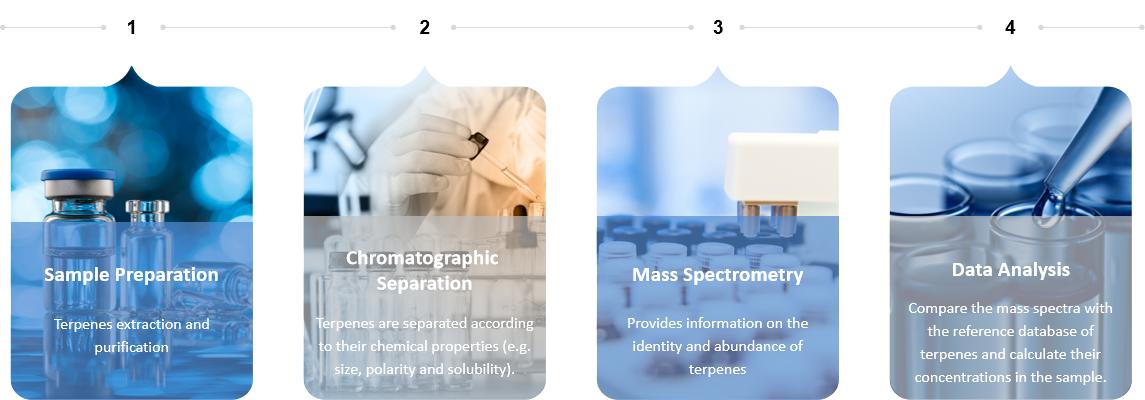What are Terpenes and Why Analyze Them?
Terpenes are hydrocarbons that are synthesized from five-carbon building blocks called isoprenes. They are found in virtually all plants, and their concentrations and profiles can vary widely depending on factors such as the plant species, growing conditions, and environmental stresses. Some of the most common terpenes found in plants include limonene, pinene, linalool, and myrcene.
Terpenes have a wide range of functions in plants, such as attracting pollinators, repelling herbivores, and protecting against pathogens. In addition to their ecological roles, terpenes have many practical applications in industries such as food, fragrance, and pharmaceuticals. For example, terpenes are widely used as flavoring agents in food and beverages, as well as in perfumes and cosmetics. Moreover, terpenes are known for their therapeutic properties, such as anti-inflammatory, antioxidant, and antitumor effects.
Given the importance of terpenes in various industries, there is a growing need for accurate and reliable terpene analysis methods. Analyzing terpenes can provide valuable information about the chemical composition and quality of plant-based products, as well as their potential health benefits. Terpene analysis can also help to identify and quantify specific terpenes of interest, which can be useful for research and product development purposes.
Applications of Terpene Analysis
Terpenes analysis has many applications in various fields, including pharmaceuticals, food and beverage, cosmetics, and agriculture. Terpenes analysis can be used to:
- Evaluate the quality and authenticity of essential oils, fragrances, and flavors.
- Identify the bioactive compounds present in natural products, such as medicinal herbs and spices.
- Understand the biochemical pathways involved in the biosynthesis of terpenes and their regulation.
- Develop new therapeutic agents based on the structure and activity of terpenes.
Terpene Analysis in Creative Proteomics
Creative Proteomics offers customized terpene analysis services to meet specific customer needs such as terpene analysis, quantification and identification. We use state-of-the-art LC-MS platforms such as the Agilent 1290 Infinity II LC system coupled with the Agilent 6545 quadrupole time-of-flight mass spectrometer to ensure the accuracy and precision of terpene analysis results. the LC-MS platform is highly sensitive and can detect even trace amounts of terpenoids in complex mixtures.
Our glyphosate analysis services include:
- Terpenes profiling by gas chromatography-mass spectrometry (GC-MS) and liquid chromatography-mass spectrometry (LC-MS).
- Identification and quantification of terpenes and their metabolites.
- Structural elucidation of terpenes by LC-MS.
- Bioinformatic analysis of terpenes biosynthesis and regulation pathways.
 Workflow for Terpene Analysis
Workflow for Terpene Analysis
Terpenes can be analyzed including, but not limited to, the following table:
| Terpenes |
|---|
| Limonene | Linalool | Alpha Bisabolol |
| Delta-Limonene | Camphene | Myrcene |
| Pinene | Citral | Eucalyptol |
| Alpha-pinene | Citronellal | Humulene |
| Beta-pinene | Caryophyllene | NerolidolPhytol |
| Geraniol | Beta-caryophyllene | Valencene |
| Terpinolene | Delta-3-Carene | Terpineol |
If you would like to analyze other metabolites or learn more, please contact us. We look forward to working with you.
For Research Use Only. Not for use in diagnostic procedures.


 Workflow for Terpene Analysis
Workflow for Terpene Analysis
